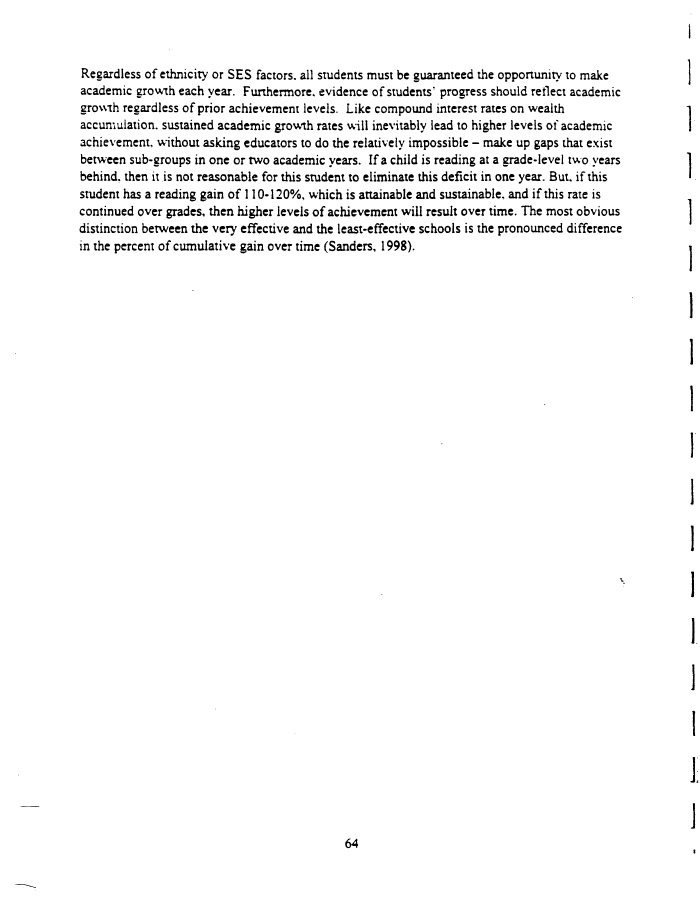 |
||||
|
TASK FORCE TO STUDY THE HISTORY AND LEGACY OF SLAVERY IN MARYLAND (Final Report) 1999/12/31 MdHR 991422 MdHR 991422, Image No: 204 Print image (28K) |
 |
||||
|
TASK FORCE TO STUDY THE HISTORY AND LEGACY OF SLAVERY IN MARYLAND (Final Report) 1999/12/31 MdHR 991422 MdHR 991422, Image No: 204 Print image (28K) |
| i Regardless of ethnicity or SES factors, all students must be guaranteed the opportunity to make academic growth each year. Furthermore, evidence of students' progress should reflect academic growth regardless of prior achievement levels. Like compound interest rates on wealth accumulation, sustained academic growth rates will inevitably lead to higher levels of academic achievement, without asking educators to do the relatively impossible - make up gaps that exist between sub-groups in one or two academic years. If a child is reading at a grade-level two years 1 behind, then it is not reasonable for this student to eliminate this deficit in one year. But. if this • student has a reading gain of 110-120%, which is attainable and sustainable, and if this rate is continued over grades, then higher levels of achievement will result over time. The most obvious distinction between the very effective and the least-effective schools is the pronounced difference in the percent of cumulative gain over time (Sanders, 1998). i 64 |